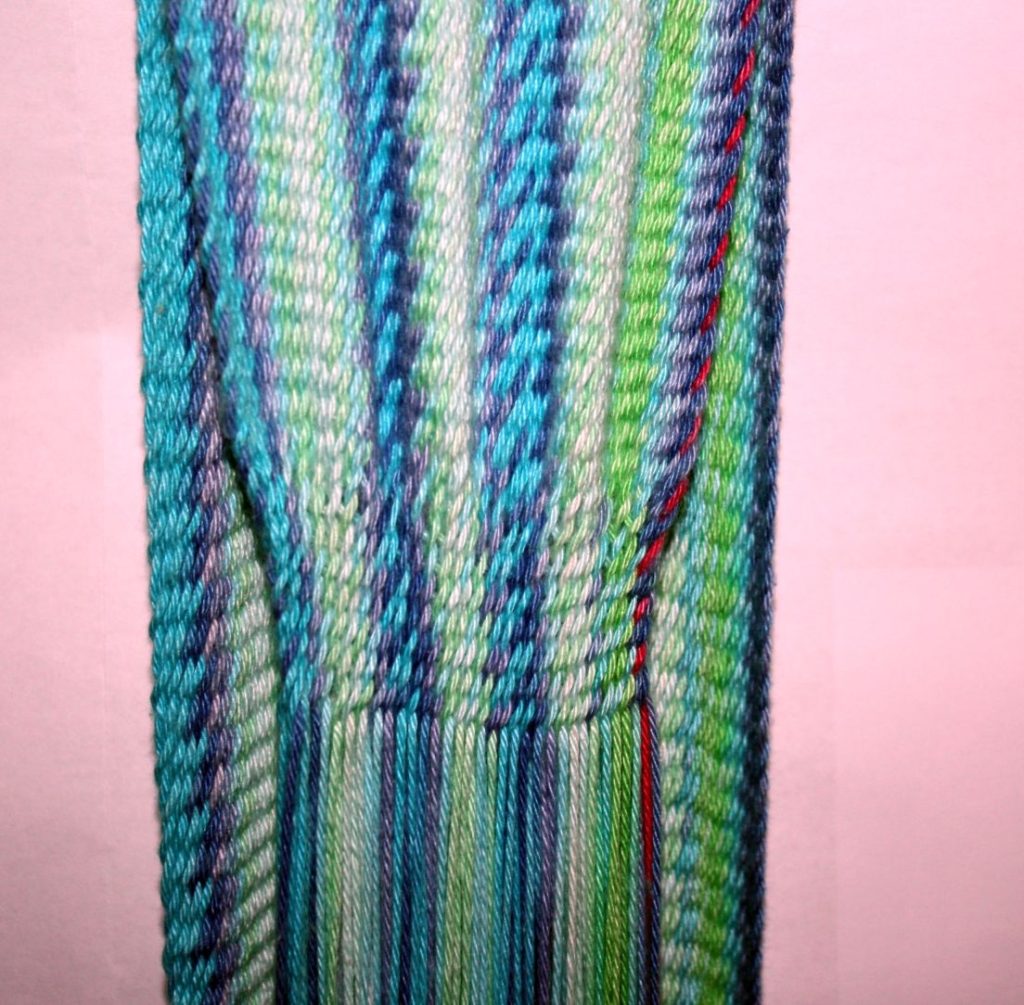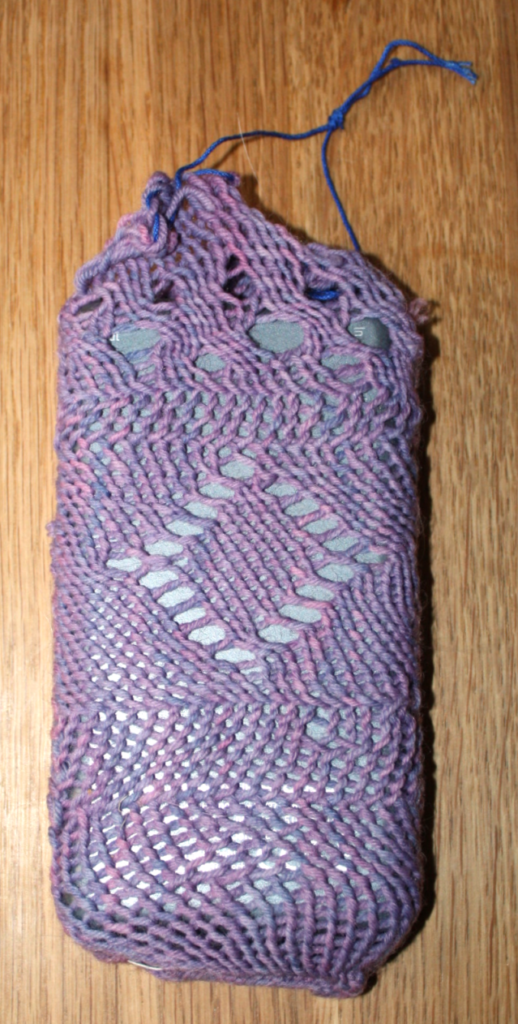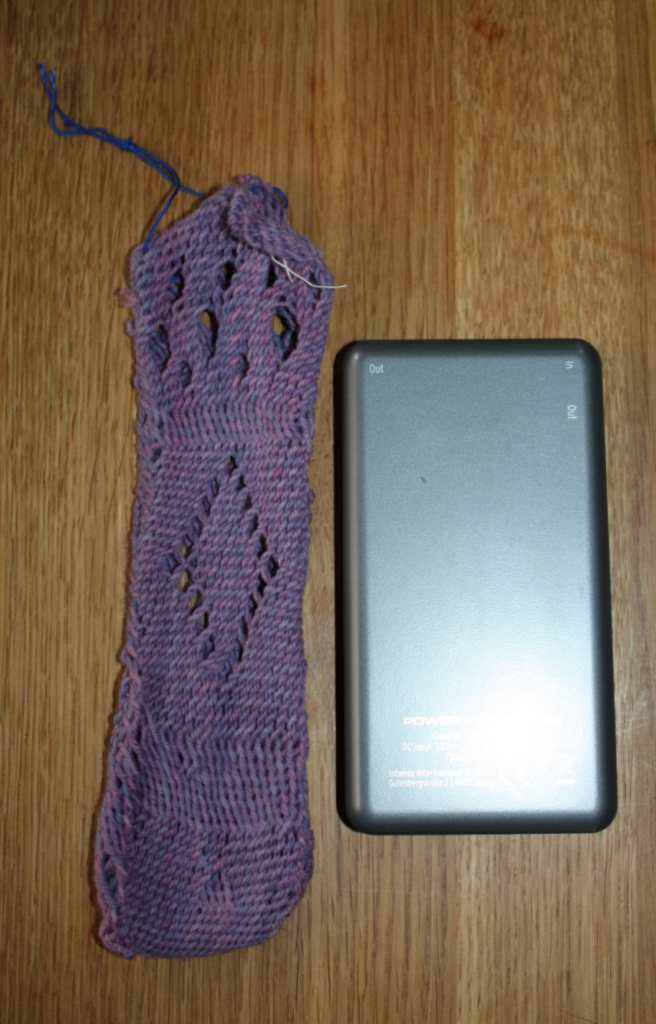Just to bring yesterday's thoughts to a close with a little story about how differently people think, here's what happened many years ago at my birthday party.
We were all sitting in the living room back in our old apartment, me and a number of friends and of course the most patient man of them all, and chatting away and having a good time, and then suddenly one of the many physicists in the room points at my little spinning wheel standing in one corner and says "How does this thing work?"
So of course I do what you do in such a situation - I pull out the wheel and I show how spinning is done, and I explain that this both twists the thread and winds it up at the same time, and it does this because the treadle drives the wheel and that in turn drives the bobbin, and the flyer is taken along for the ride by the yarn running through the hooks, but slowed down by this brake thing here, so they go at different speeds and this is why the yarn is wound onto the bobbin.
Blank stares. No comprehension whatsoever. "Yes, but how does this work?" So I try to explain again, showing all the different parts, explaining how the rotation of the whole thing twists up the fibre into yarn, and the flyer is just taken along for the ride by that yarn running over it, and I try to find different words, and different angles to look at it, but I have no clue how to explain it better, and I am met with blank stares still - I just can't get it across, and I'm getting frustrated, my goodness, there must be a way for me to make them understand?
Because, you see, I know my friends. I know very, very well that they are not stupid. At all. Or slow on the uptake. They are working at university, they are making science, they are writing their PhDs, and I've read some of the things they write, and I don't even get half of it, but I do get enough to know they are very intelligent people. And still... I just can't get that simple concept of how a flyer wheel works across to them.
So I'm sitting there, about to start over again with my explanation though I'm really feeling helpless by now - and then the Most Patient Man steps in, and he says just four words:
"It's a slip clutch."
Around me, six or seven men go "Aah." simultaneously. Now they know exactly how this works.
And me? When I think of this evening, I can still hear that "Aah", and I can also still remember the mix of feelings that I had about it - relief that at last there was clarity, and feeling slightly stupid because I had not been able to explain in a way to meet their needs, and at the same time realising that there can be differences in thinking so huge that the fitting explanation can be completely unavailable to me, and that it needed someone else who knows my way of thinking better, and who also knows the others' way of thinking, and knows the latter well enough to make the translation.
I have made very sure, though, to remember that term. These days, whenever someone stands before me, wanting me to explain the spinning wheel, and he (it's usually men) looks at me with a blank stare after the normal explanation, but it seems like he might be a technically inclined person, like an engineer, or a physicist, or something in that line of work, I take a breath and I say "It's a slip clutch."
You know what? They usually go "Aah." Finding the right words to explain is all it takes... and it also is what makes explaining, sometimes, really hard - because the right words do exist, only they might not exist in my personal dictionary. (Yet.)
We were all sitting in the living room back in our old apartment, me and a number of friends and of course the most patient man of them all, and chatting away and having a good time, and then suddenly one of the many physicists in the room points at my little spinning wheel standing in one corner and says "How does this thing work?"
So of course I do what you do in such a situation - I pull out the wheel and I show how spinning is done, and I explain that this both twists the thread and winds it up at the same time, and it does this because the treadle drives the wheel and that in turn drives the bobbin, and the flyer is taken along for the ride by the yarn running through the hooks, but slowed down by this brake thing here, so they go at different speeds and this is why the yarn is wound onto the bobbin.
Blank stares. No comprehension whatsoever. "Yes, but how does this work?" So I try to explain again, showing all the different parts, explaining how the rotation of the whole thing twists up the fibre into yarn, and the flyer is just taken along for the ride by that yarn running over it, and I try to find different words, and different angles to look at it, but I have no clue how to explain it better, and I am met with blank stares still - I just can't get it across, and I'm getting frustrated, my goodness, there must be a way for me to make them understand?
Because, you see, I know my friends. I know very, very well that they are not stupid. At all. Or slow on the uptake. They are working at university, they are making science, they are writing their PhDs, and I've read some of the things they write, and I don't even get half of it, but I do get enough to know they are very intelligent people. And still... I just can't get that simple concept of how a flyer wheel works across to them.
So I'm sitting there, about to start over again with my explanation though I'm really feeling helpless by now - and then the Most Patient Man steps in, and he says just four words:
"It's a slip clutch."
Around me, six or seven men go "Aah." simultaneously. Now they know exactly how this works.
And me? When I think of this evening, I can still hear that "Aah", and I can also still remember the mix of feelings that I had about it - relief that at last there was clarity, and feeling slightly stupid because I had not been able to explain in a way to meet their needs, and at the same time realising that there can be differences in thinking so huge that the fitting explanation can be completely unavailable to me, and that it needed someone else who knows my way of thinking better, and who also knows the others' way of thinking, and knows the latter well enough to make the translation.
I have made very sure, though, to remember that term. These days, whenever someone stands before me, wanting me to explain the spinning wheel, and he (it's usually men) looks at me with a blank stare after the normal explanation, but it seems like he might be a technically inclined person, like an engineer, or a physicist, or something in that line of work, I take a breath and I say "It's a slip clutch."
You know what? They usually go "Aah." Finding the right words to explain is all it takes... and it also is what makes explaining, sometimes, really hard - because the right words do exist, only they might not exist in my personal dictionary. (Yet.)




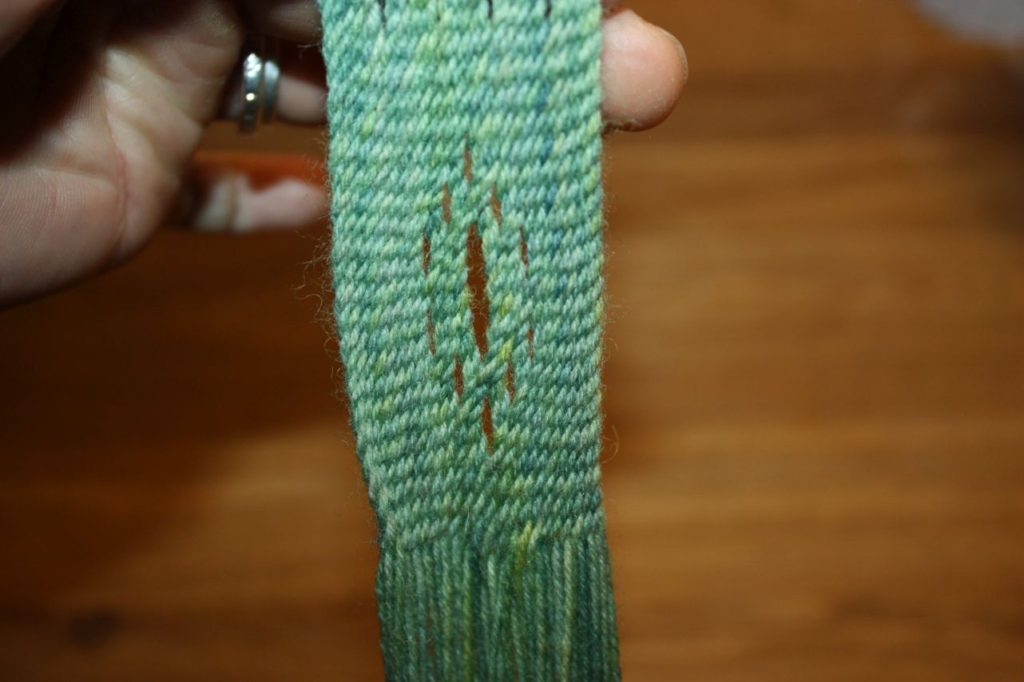 The flower motif - almost invisible on the collapsed sprang...
The flower motif - almost invisible on the collapsed sprang... ...but very much visible when it is stretched out a bit!
...but very much visible when it is stretched out a bit!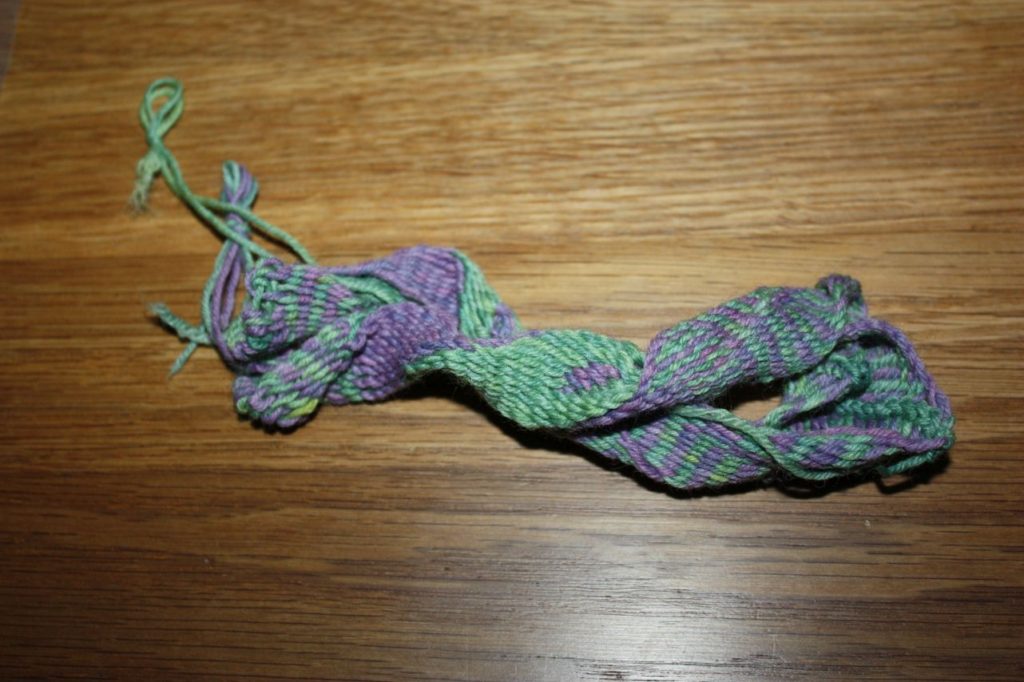 Thanks to this twisting up on itself, you can see the striped beginning (purple and green following each other) and then, in the middle, the double-layer sprang (where I even did a tiny bit of colour changing).
Thanks to this twisting up on itself, you can see the striped beginning (purple and green following each other) and then, in the middle, the double-layer sprang (where I even did a tiny bit of colour changing).